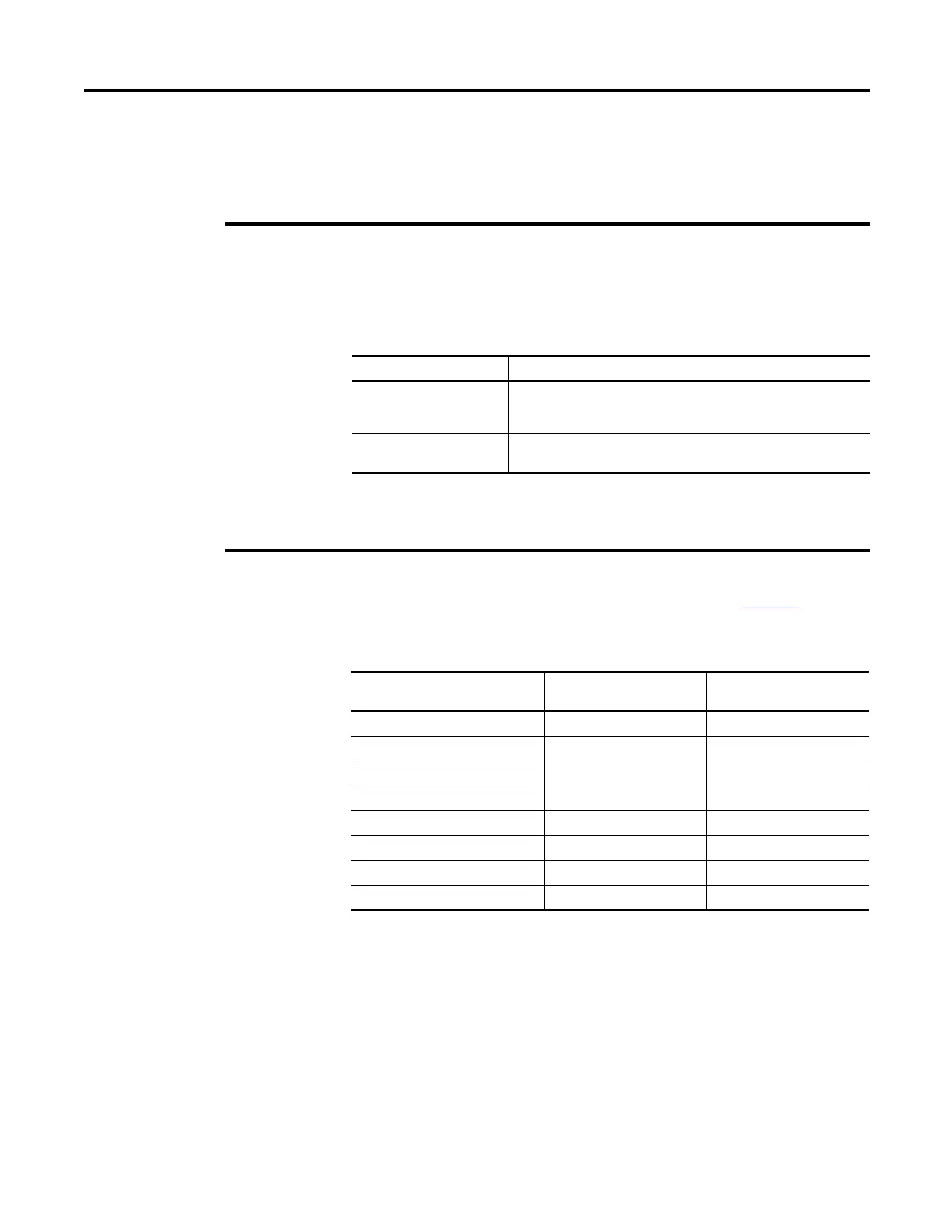Rockwell Automation Publication 1756-RM003N-EN-P - October 2011 377
Array (File)/Misc. Instructions (FAL, FSC, COP, CPS, FLL, AVE, SRT, STD, SIZE) Chapter 8
Description: The number of bytes filled is:
Byte count = Length ∗ (number of bytes in the Destination data type)
For best results, the Source and Destination should be the same type. If you want
to fill a structure, use the COP instruction (see example 3 on page 367
). If you
mix data types for the Source and Destination, the Destination elements are filled
with converted Source values.
Arithmetic Status Flags: Not affected
Fault Conditions: None
You must test and confirm that the instruction doesn’t change data that you don’t
want it to change.
The FLL instruction operates on contiguous data memory. In some cases, the
instruction writes past the array into other members of the tag. This happens if the
length is too big and the tag is a user-defined data type.
The Length is too big if it is more than the total number of elements in the
Destination array.
If the tag is Then
User-defined data type If the Length is too big, the instruction writes past the end of the
array into other members of the tag. It stops at the end of the tag. No
major fault is generated.
NOT user-defined data type If the Length is too big, the instruction stops at the end of the array.
No major fault is generated.
If The Source Is And The Destination Is The Source Is Converted
To
SINT, INT, DINT, or REAL SINT SINT
SINT, INT, DINT, or REAL INT INT
SINT, INT, DINT, or REAL DINT DINT
SINT, INT, DINT, or REAL REAL REAL
SINT Structure SINT (not converted)
INT Structure INT (not converted)
DINT Structure DINT (not converted)
REAL Structure REAL (not converted)
